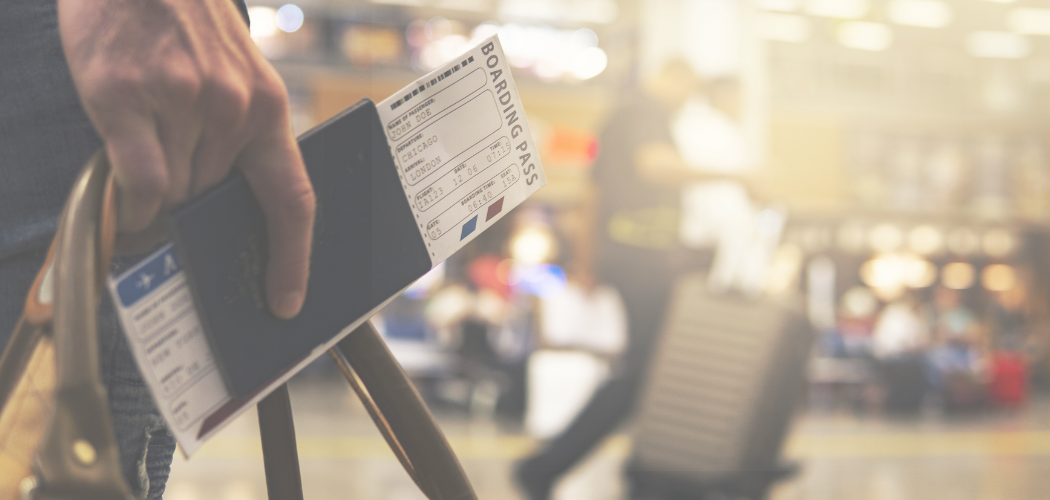We have been searching all corners of the globe for insights on how the airline and travel sectors will fare, dare we say “rebound” in 2021. The impact of the global pandemic could not have hit an industry harder than it did travel and hospitality, and our compilation of opinions on what the future will hold is great reading for anyone interested in travel loyalty and frequent flyer programs.
To add to our global perspective, we landed an interview with David Feldman, Partner, Airline & Hotel Strategy at New World Loyalty. David’s presence is seemingly ubiquitous in frequent flyer program circles and his understanding of these business sectors is immense.
David is also highly entertaining and the master of communicating with the gloves off. We are delighted to share this fast-moving conversation with you. Let’s get to the Q&A.
Wise Marketer (WM): The travel industry, airlines in particular, was one of the hardest hit by the pandemic. Looking at where we stand today, how long do you think it will take for meaningful recovery to occur?
David Feldman (DF): Despite the massive propaganda push by the travel industry to convince members that traveling is safe — expect the recovery to take longer than anticipated. Only a small percentage of former top-traveling members will return quickly.
Many former top-tier travelers will re-prioritize and decide that they value being at home with family. Combined with less pressure to travel for work, programs will struggle with depressed travel demand from their best customers. Some will not return in significant volumes at all.
2021 will likely be a sluggish year, with recovery led by non-traditional member segments, for which historical data is useless.
WM: Every airline and hotelier had to make rapid adjustments in response to the pandemic. What are the most memorable changes to frequent flyer programs (FFP) that you recall from 2020?
DF: Early responses to the pandemic were a double-edged sword. We had some airlines around the world literally stealing customer money, failing to provide services, and refusing refunds — all while receiving government assistance and in many cases with flagrant disregard to laws requiring them to provide refunds. No other industry in the world is or would be permitted to do such a thing.
On the other hand we had many travel brands going out of their way to reassure members that the brand would look after them. They did this by freezing or extending points expiry, extending eligibility for elite status tiers, and providing novel redemption opportunities that were relevant to members stuck under Stay-at-Home orders.
Coming out of the crisis members will remember which brands “did the right thing” vs those that took advantage of members in their own time of need.
WM: The airlines centered many announcements on the cabin experience, trying to win back travelers. Airport check-in procedures, cabin cleaning, seating arrangements, and food service were among the most visible. What part of the changes made will become a permanent part of “how we fly” versus those that were necessary as a response to the pandemic?
DF: Most members are quite cynical towards many of the efforts. Especially the tone-deaf approach of International Air Transport Association (IATA) and others.
Airlines like Delta, for example, that have continued to block middle seats are reporting higher revenue yields from passengers going out of their way to purchase Delta fares instead of competitors who are packing planes full.
However, the future experience will be a challenge for airlines. Cost pressure means the hard product and service components will suffer from lack of investment, while marketing efforts will be under pressure to drive sales. These marketing and cost pressures will be in direct conflict with other.
WM: What new types of benefits do you think airlines could incorporate into their FFP’s in the future? How should these programs change in the future?
DF: The single most important priority for all FFPs is to refocus on the core value proposition. Remember that members enroll in FFPs because they want a free flight in the future — period — and members will no longer maintain patience for programs that fail to provide genuine value. Switching costs and apathy previously led to significant member inertia. Those dynamics no longer exist.
Members of airline and hotel programs have been presented with a massive reset. All the efforts over the years to lock-in members, create stickiness, and increase switching costs have been removed. Whilst status match campaigns by hungry competitors are predictable, the real impact will be member-self-reassessment — which will likely drive increased attrition.
As airlines have discovered that the managed corporate traveler has evaporated, the effort is being made to refocus on leisure and VFR (Visiting Friends & Relatives), as well as self-funded (or at least self-selecting) travelers who typically dominate the mid-tiers in programs.
The key strategy focus will need to be ensuring that the program value proposition is relevant and attractive to the broadest possible base of travelers. That means (for some programs) — the time is now here to finally focus on expanding relevant partner networks, as well as reversing devaluations.
Expect these initiatives to continue through 2021.
WM: I think it is fair to say that FFP’s have the most complex structure of any loyalty programs in the marketplace. Do you think the pandemic showed us that simplifying program structures could create more bond between customers and the airlines, or should formats stay pretty much the same?
DF: Further to the previous point — some airlines have recognized that the folks currently flying, are not the same high-spending corporate segments that they had focused their efforts on. The smart FFPs have been recalibrating their strategies and tactics to ensure that they are relevant to the folks that are flying.
On one hand simpler is often better as it makes the program and brand value proposition easier to communicate. On the other hand different segments require different approaches (and value various program benefits differently).
WM: What is the current state of play on FFP's being spun off? Is it viable for a FFP to operate as a separate business entity from its airline host?
DF: Haha! The easy answer is that FFP spin-offs are as popular right now as a bat in a Chinese market!
The more complicated answer is twofold:
- Traditional “spin-offs” are dead… as a doornail.
- Whilst being widely recognized as incompatible with being a completely standalone business, a (long-time coming), recognition of the value that FFPs contribute to parent brand has been accompanied by a recognition that wholly-owned separate entities can allow the business to leverage and monetize the program.
Obviously, the focus has been on emergency short-term liquidity supply, but we are seeing novel solutions instead of the previous “fire-sale” mentality.
Airlines are recognizing that there are benefits from increased disclosures of program financials. This may lead to ‘some’ continued efforts to report on program performance as a separate internal entity at the very least.
WM: JP Morgan Chase announced an alliance to create a tradeable asset from FFP miles: What are your opinions about this? Will it go anywhere or is it a symbolic statement?
DF: This is an inside baseball issue that is irrelevant to most folks. It is of potential interest to market traders and investors in the same way as a discussion of mutual funds vs ETFs.
Investors that are interested in investing in loyalty programs, will do so regardless of how the mechanics of that investment work.
WM: Do you think the airlines could use SMS, location based, or in app communications more to improve the travel experience? Who is already doing this well and what will the future hold?
DF: Sure, but this is one of those things that just falls in the bucket of “improving the customer experience”, or “reducing friction”. It is all part of the general CX strategy (which should be a priority for every single business on the planet).
But a fancy in-app communication strategy isn’t going to fix the customer experience for an airline that withholds refunds, screws over passengers in day-to-day operations, or operates an FFP with a poor value proposition.
That said, I guess there are some folks that enjoy having their teeth pulled by the dentist…but for everyone else, prioritize the basic customer experience requirements before being distracted by the latest vendor pitch.
Previous Opinions on Airlines and Frequent Flyer Programs:




